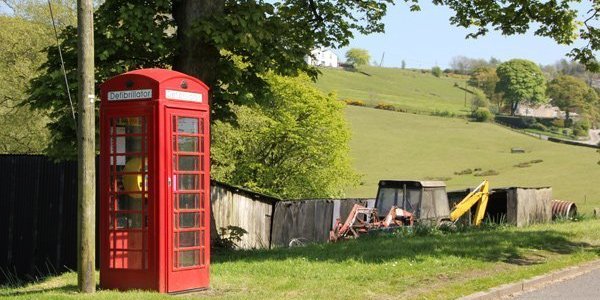Defibrillators In Our Parish
At a parish meeting in 2016 a local resident, who also happened to be a retired GP, brought to the attention of those present that most communities were arranging for defibrillators to be installed and there was a need for some in Sutton Parish, he himself had heart problems and reminded everyone how they could save lives.
Research was undertaken and we found...
A defibrillator is a computerised medical device that delivers an electrical current through the chest which aims to shock the heart back into a normal rhythm allowing it to pump again. Rapid response using automated technology can significantly improve the quality of life of a survivor, as the longer the brain is starved of oxygen, the more damage can occur. An AED is a portable defibrillator especially designed for people with little or no medical background. When applied to the casualty, voice commands and screen messages will guide the user step-by-step through the process and its intelligent technology will only allow it to shock a ‘shockable’ heart rhythm. AED technology opens a window for the public to take on a key role to support emergency services who would otherwise be hindered by the time it takes to reach the casualty. It is argued that AEDs should be as broadly deployed as fire extinguishers and first aid kits.
Was there a need in our community...
Sudden cardiac arrest happens around 140,000 times a year in the UK, making it one of the UK’s largest killers – equivalent to a jumbo jet crashing every day! The potential for saving a life is dependent upon time, the faster medical help can be realised, the better the chance of survival. Clinical studies suggest you have less than 5 minutes from the cardiac event to save the life, this decreasing by up to 23% per minute. In rural areas it takes time to get medical help, so community Public Access Defibrillators (cPAD) have a very important part to play in helping save lives in rural communities. cPAD schemes are reckoned to be about 10 times more effective in saving life post hospital than other community schemes alone. Your community needs to decide if you want one, but as SCA can happen to anyone at any time, and is not age related, better safe than sorry! Try timing yourself from your nearest Ambulance station.
The UK Resuscitation Council guidance on having an AED in a community is whether an AED can be with the patient within 5 minutes of the SCA event happening, regardless of whether it is a cPAD scheme or a community responder scheme. If this cannot be achieved then your community may require a cPAD box and AED in addition to anything else you have available.
Your Parish Council agreed there was a need and...
Undertook further research that identified a charity called The Community Heartbeat Trust (CHT) who would be able to help to progress this. Subsequently Martin Fagan, the National Secretary of the CHT undertook a tour of the Parish and made recommendations regarding potential locations for defibrillators. Martin also advised that some communities had been successful with applications for grant funding from the Big Lottery. Subsequently the Parish Council decided that funding would be applied for four defibrillators, if successful one would be placed in each of the four wards. Councillors also recognised that there was a need for a defibrillator near to or at Macclesfield Forest, however, the Lottery funding had a ceiling of £10,000 per application.
The funding application was successful and the four defibrillators have been placed at
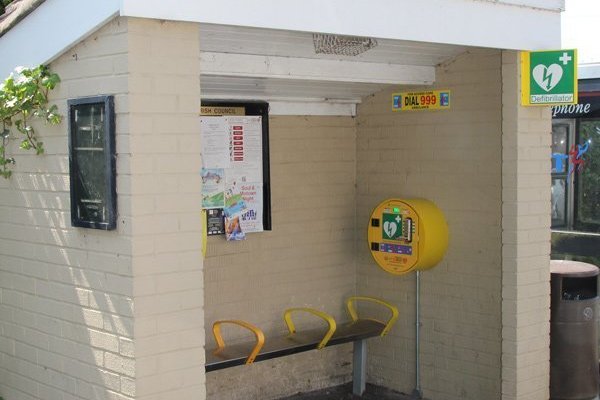
Cock Hall Lane, Langley SK11 0DE, opposite Langley Methodist Church
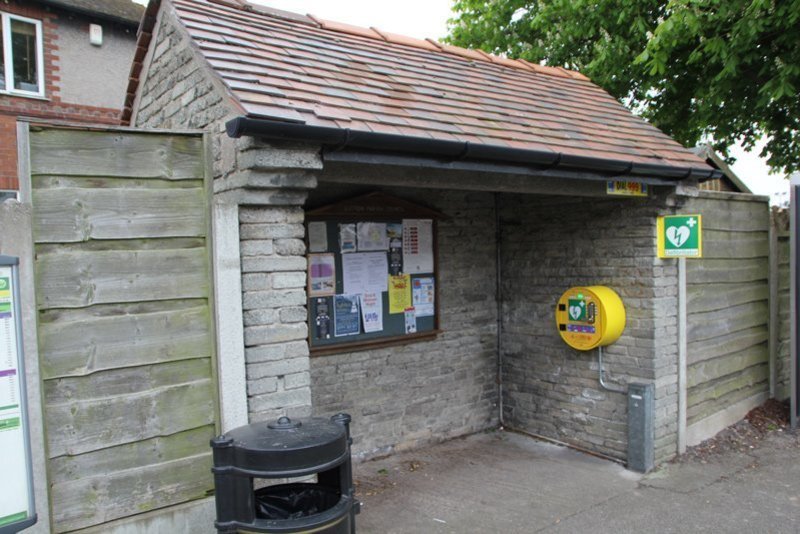
Bus Shelter, Lindrum Ave, Lyme Green SK11 0LG, near to Junction with London Road. Bus Shelter

Red Phone Box, Between a house called ‘Fernlee’ and ‘Drove Hey farm’ Meg Lane, Higher Sutton. SK11 0LY, near Village sign
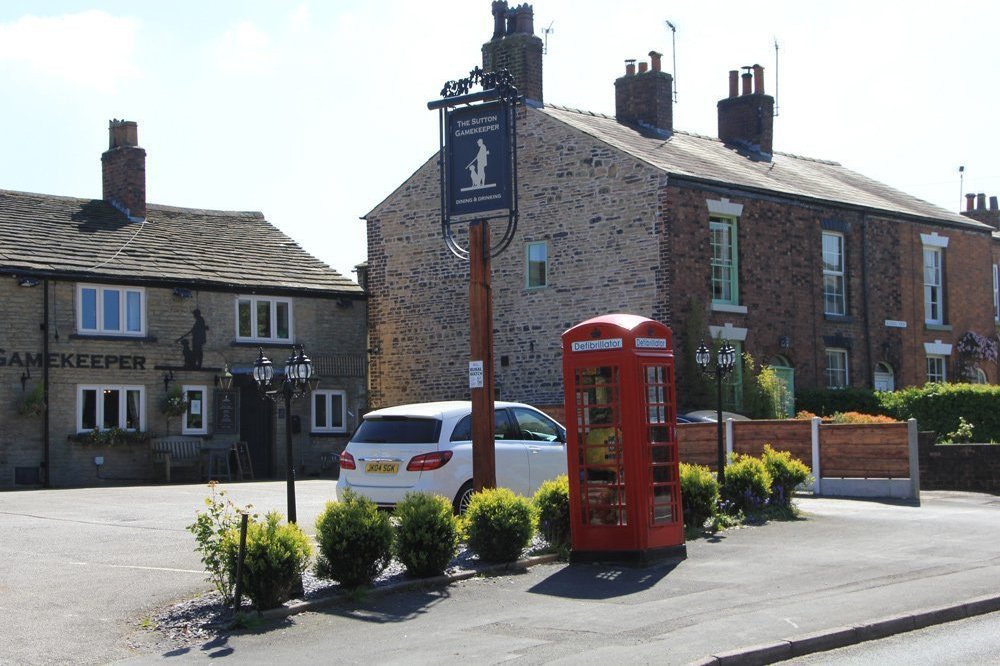
Red Phone Box, Hollin Lane, Sutton. SK11 0HL, near Sutton GameKeeper PH
A defibrillator at Macclesfield Forest
The parish council partnered with United Utilities and together with the aid of a grant we were able to secure a placement of a defibrillator at the rangers station in Macclesfield Forest.
How do I access the defibrillator?
Each defibrillator is in a locked cabinet, to obtain the access code you need to dial 999, the ambulance service have full details of each defibrillator, including their locations.
What would I expect to be inside the cabinet?
After obtaining the code from the ambulance service and opening the door, you will find on the back of the door a hi viz vest and a windup torch, the defibrillator is in the yellow bag, in the front pocket of the bag is a green first aid kit, also referred to as a ready kit, it contains the items you can see on the picture.
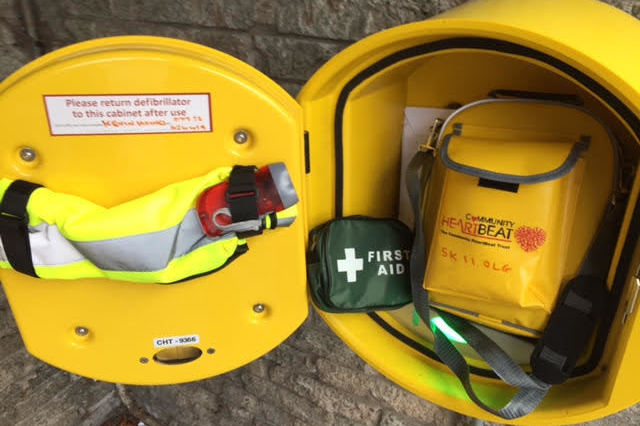
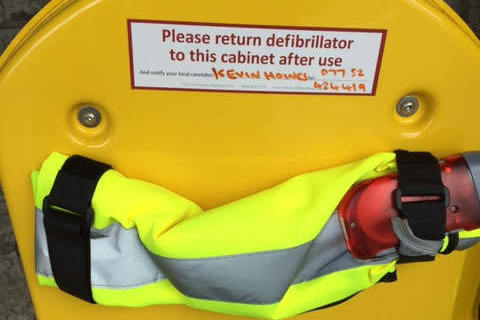
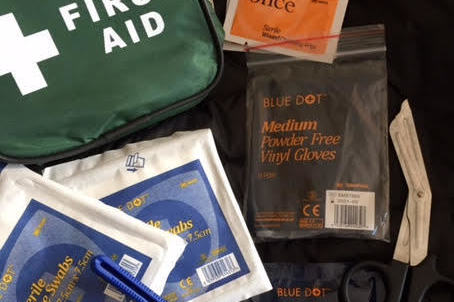
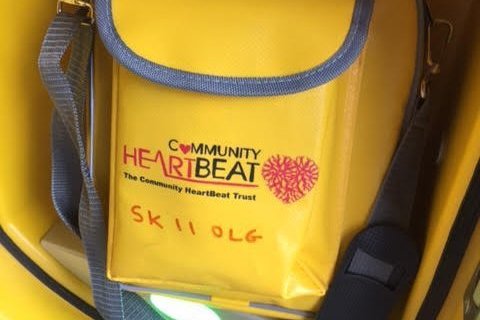
The defibrillator bag also contains contact details for the Parish Council, everything is marked with the postcode of where the defibrillator belongs. The emergency services will help to return the equipment to the care of the volunteers who look after it.
What else might I find inside the cabinet?
Also inside the defibrillator cabinet is a white envelope which contains spare pads, this should stay in the cabinet, the envelope is clearly marked with contact details should it inadvertently be removed.
How do I know the defibrillator will be Ok for use if I need it in an emergency?
Volunteers check the cabinet and defibrillator each week to ensure everything is present and in working order. The contact details for the relevant volunteer is written on the inside of the cabinet door.
What to expect if you have to use a defibrillator in an emergancy?
What to expect if you have to use one in an emergency -after obtaining the code from the ambulance service and opening the door, you will find on the back of the door a hi viz vest and a windup torch, the defibrillator is in the yellow bag, in the front pocket of the bag is a green first aid kit, also referred to as a ready kit, it contains the items you can see on the picture. The deliberator bag also contains contact details for the Parish Council, everything is marked with the postcode of where the deliberator belongs. The emergency services will help to return the equipment to the care of the volunteers who look after it.
Also inside the defibrillator cabinet is a white envelope which contains spare pads, this should stay in the cabinet, the envelope is clearly marked with contact details should it inadvertently be removed.
Volunteers check the cabinet and defibrillator each week to ensure everything is present and in working order.
We would like to thank the volunteers that help every week to maintain the defibrillators in the Parish and ensure this vital piece of equipment is up and running at all times.
Share this post:

